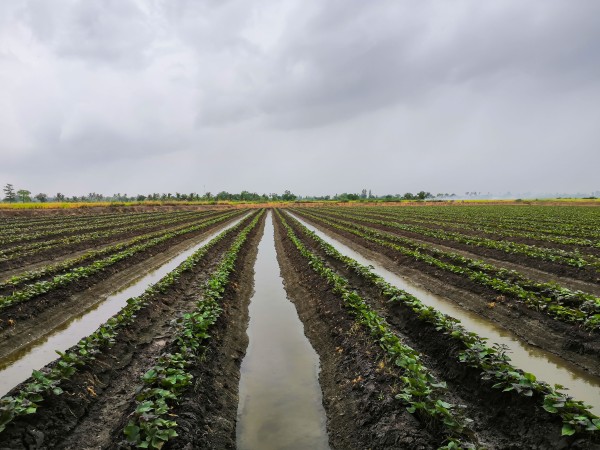How to Make your Brand Stand Out
Being a newbie in any industry is tough, most especially in the cutthroat world of food and bever-ag...

March 30, 2022
The province of Bohol is home to a special type of tuber, the ube kinampay. Recognized as the “Queen of Philippine Yams” by the Bureau of Plant Industry, the ubi kinampay is favored for having smooth and round roots, a sweet flavor, distinct aroma, and vibrant color that ranges from marbled purple-white to deep purple.
The province of Bohol is home to a special type of tuber, the ube kinampay. Recognized as the “Queen of Philippine Yams” by the Bureau of Plant Industry, the ubi kinampay is favored for having smooth and round roots, a sweet flavor, distinct aroma, and vibrant color that ranges from marbled purple-white to deep purple.
 The Slow Food Movement’s Ark of Taste, the international catalog of endangered heritage foods, describes the ube kinampay: “It is a climbing plant which produces tubers externally, as well as, and especially, underground, where they have the function of roots of the plant and can weigh up to 6 kg. They have an irregular shape and rough skin.”
The Slow Food Movement’s Ark of Taste, the international catalog of endangered heritage foods, describes the ube kinampay: “It is a climbing plant which produces tubers externally, as well as, and especially, underground, where they have the function of roots of the plant and can weigh up to 6 kg. They have an irregular shape and rough skin.”
70-percent of the ube kinampay is composed of water. It is also rich in calcium, vitamins, and proteins. Its sweetness is due to the tuber’s high concentration of glucose. The planting of ubi kinampay starts in May. It requires enough moisture throughout its six to eight months of growing. It is then harvested at the start of the year when its foliage turns yellow and dry.
Ubi kinampay is native to Bohol’s Panglao Island and Guindulman, where the soil is described as sandy loam or silt loam and the temperatures range from 25- to 30-degrees Celsius. According to the Department of Agriculture Region 7 Office, this specific environment is where crop specialists attribute the ube kinampay’s distinct characteristics. They cited that planting this same variety of ubi elsewhere in the country won’t result in the same taste and aroma. Currently, the province has 600 hectares of ubi farms that yield six tons of ubi per hectare.
The Bureau of Plant Industry further classifies the ube kinampay into five varieties: the original kinampay, which has a reddish-purple flesh; kabus-ok, with its white flesh and large roots; tamisan, which has a reddish-white flesh and is sweeter; binanag, which is elongated and has a creamy-white flesh; and the binato, which is big and hard with white flesh.
For Boholanos, the ubi kinampay is a sacred godsent product. The local tourism office even calls it an “agro-historical-geographical-religious” symbol. Traditional stories have noted how the tuber has saved locals from hardships, such as famine, drought, and war. Whenever food was scarce, locals turned to ube kinampay for sustenance. Thus, a common practice, which is taught even among children, is to kiss the ube kinampay whenever it accidentally falls to the ground.
 Locals prefer to use only ube kinampay when making ube halaya or jam. It is also transformed into other sweet products like ice cream, pastillas, and polvoron. It is sometimes added to savory meat dishes to give them a hint of sweetness. Its skin is used as a raw material for food coloring.
Locals prefer to use only ube kinampay when making ube halaya or jam. It is also transformed into other sweet products like ice cream, pastillas, and polvoron. It is sometimes added to savory meat dishes to give them a hint of sweetness. Its skin is used as a raw material for food coloring.
Demand for the ube kinampay remains high both locally and globally. Export demand has been estimated by the Department of Agriculture at 49,000 tons annually. This includes the ube kinampay’s various derivatives, such as cubes, powder, puree, flakes, or flour. However, production has been slow and supply has not been enough to meet this demand, largely due to the lack of plantations in the area.
The Ubi Festival is celebrated annually every January to promote the ube kinampay and increase local awareness about its benefits. Here, farmers can sell ube kinampay at lower prices, exhibit their products, and share their knowledge about the tuber.
To further encourage farmers to sustain ubi kinampay production, the local government has tagged ubi as a priority sector. The target is to establish a minimum of 20,000 to 30,000 hectares for ubi farms. The local government is also helping by distributing planting materials and creating nurseries to boost its propagation. The Bohol Experiment Station has also been put up to help further research on the province’s high-value, priority crop, especially in preventing disease and deterioration.
Check out these food fusions between Filipino and Middle Eastern cuisines
The unending quest for healthy and sustainable food amid changing lifestyles
A quick look at the Philippine food staple often getting a bad health rap